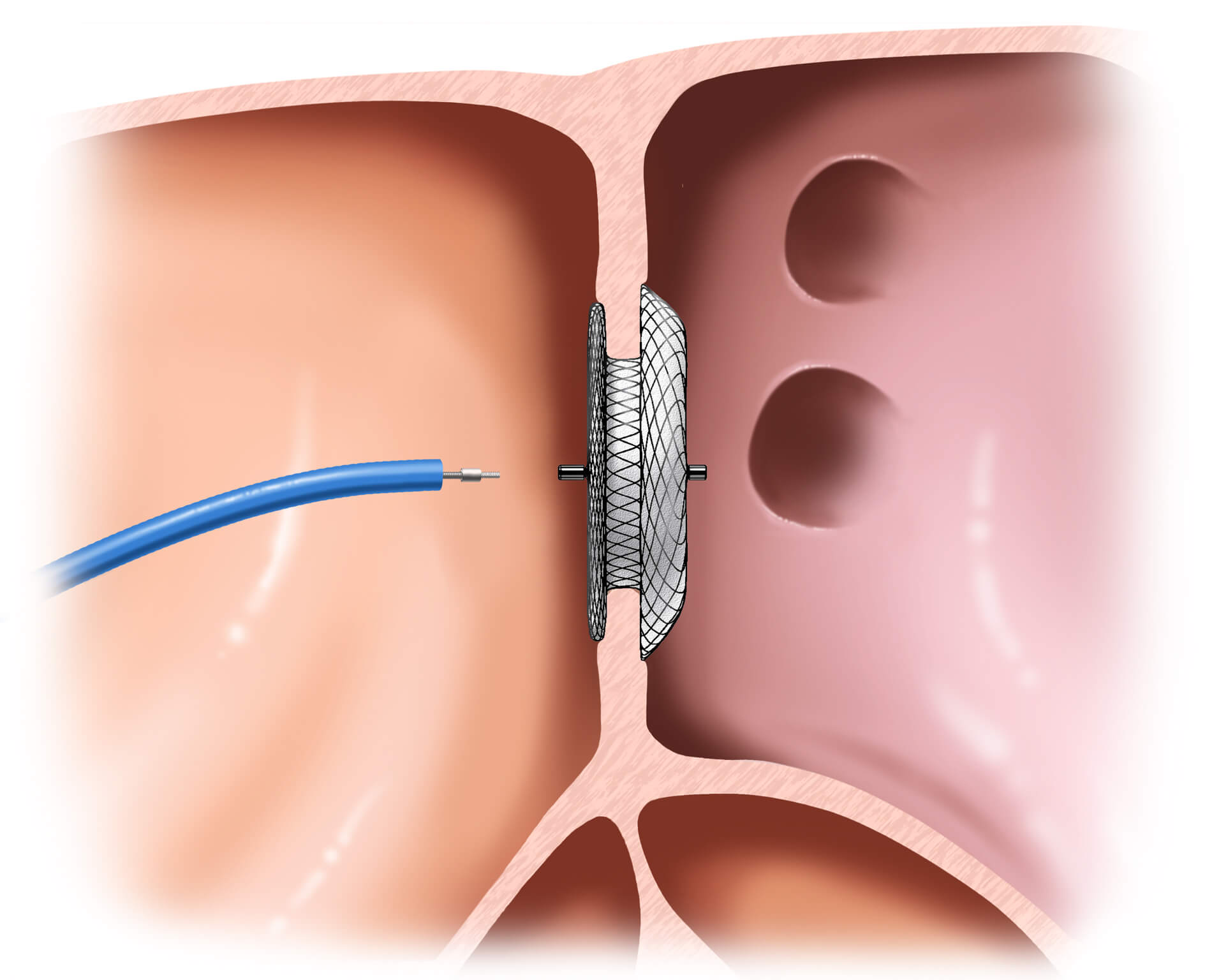An atrial septal defect (ASD) is an opening or hole in the wall that separates the two upper chambers of the heart. This wall is called the atrial septum. The hole causes oxygen-rich blood to leak from the left side of the heart to the right side. This causes extra work for the right side of the heart, since more blood than necessary is flowing through the right ventricle to the lungs.
If the ASD is small enough, it can be closed with a special device. The procedure is done in the heart catheterization lab.
What causes it?
Every child is born with an opening between the upper heart chambers. It’s a normal fetal opening that allows blood to detour away from the lungs before birth. After birth, the opening is no longer needed and usually closes or becomes very small within several weeks or months.
Sometimes the opening is larger than normal and doesn’t close after birth. In most children the cause isn’t known. Some children can have other heart defects along with ASD.

How does it affect the heart?
Normally, the left side of the heart only pumps blood to the body, and the right side of the heart only pumps blood to the lungs. In a child with ASD, blood can travel across the hole from the left upper heart chamber (left atrium) to the right upper chamber (right atrium) and out into the lung arteries.
If the ASD is large, the extra blood being pumped into the lung arteries makes the heart and lungs work harder and the lung arteries can become gradually damaged.
What are the symptoms?
Many babies born with atrial septal defects have no signs or symptoms. Signs or symptoms can begin in adulthood.
Atrial septal defect signs and symptoms can include:
Can the ASD be repaired?
If the opening is small, it doesn’t make the heart and lungs work harder. Surgery and other treatments may not be needed. Small ASDs that are discovered in infants often close or narrow on their own. There isn’t any medicine that will make the ASD get smaller or close any faster than it might do naturally.
If the ASD is large, it can be closed with open-heart surgery, or by cardiac catheterization using a device inserted into the opening to plug it. Sometimes, if the ASD is an unusual position within the heart, or if there are other heart defects such as abnormal connections of the veins bringing blood from the lungs back to the heart (pulmonary veins), the ASD can’t be closed with the catheter technique. Then surgery is needed.
Procedure
The non-surgical closure of atrial septal defects (ASD) involves the following steps:

 WhatsApp us
WhatsApp us